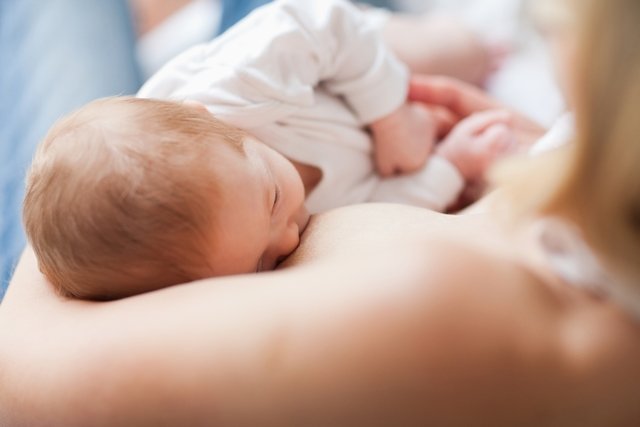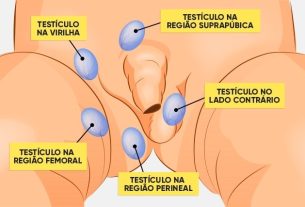To ensure that the milk offered to the baby is sufficient, it is important that breastfeeding up to six months is done on demand, that is, without time restrictions or feeding time, but at least 8 to 12 times in a 24 hour period.
When these recommendations are followed, the baby will hardly go hungry, as he will be adequately nourished.
Even so, after breastfeeding, the mother should pay attention to the following signs to confirm whether breastfeeding was really sufficient:
- The sound of the baby swallowing was noticeable;
- The baby appears calm and relaxed after breastfeeding;
- The baby released the breast spontaneously;
- The breast felt lighter and softer after breastfeeding;
- The nipple is the same as it was before breastfeeding, it is not flat or white.
Some women may report thirst, drowsiness and relaxation after giving their baby milk, which are also strong indications that breastfeeding was effective and that the baby got enough.

Other ways to identify effective breastfeeding
In addition to the signs that can be observed immediately after breastfeeding, there are other signs that can be observed over time and that help to know whether the baby is breastfeeding enough, such as:
1. The baby latch onto the breast correctly
Correctly latching on to the breast is essential to ensure the child’s good nutrition, as it ensures that the baby can suck and swallow the milk effectively and without the risk of choking. Check out how the baby should latch correctly during breastfeeding.
2. Baby’s weight is increasing
During the first three days of life, it is common for newborns to lose weight, however, after the 5th day of breastfeeding, when milk production increases, the baby will regain the lost weight within 14 days and after this period will gain weight. around 20 to 30 grams per day for the first three months and 15 to 20 grams per day for three to six months.

3. Wet diapers are changed 4 times a day
Right after birth, in the first week, the baby must wet one diaper with urine every day until the 4th day. After this period, it is estimated that 4 or 5 diapers will be used per day, which should also be heavier and wetter, which is a great indication that breastfeeding is being sufficient and that the baby is well hydrated.
4. Dirty diapers are changed 3 times a day
Feces during the first days after birth behave like urine, that is, the baby has a dirty diaper for every day of birth until the 4th day, after which the feces turn from green or dark brown to a dark brown tone. more yellowish and diapers are changed at least 3 times a day, in addition to being in greater quantity compared to the first week.
Bibliography
- NHS. Breastfeeding: the first few days. Disponível em: <https://www.nhs.uk/conditions/pregnancy-and-baby/breastfeeding-first-days/#building>. Acesso em 23 set 2020
- UNICEF UK. How can I tell that breastfeeding is going well?. Disponível em: <https://www.unicef.org.uk/babyfriendly/wp-content/uploads/sites/2/2016/10/mothers_breastfeeding_checklist.pdf>. Acesso em 23 set 2020
- MINISTRY OF HEALTH. Breastfeeding and Complementary Feeding. 2015. Available at: <https://bvsms.saude.gov.br/bvs/publicacoes/saude_crianca_aleitamento_materno_cab23.pdf>. Accessed on 23 Sep 2020

Sign up for our newsletter and stay up to date with exclusive news
that can transform your routine!
Warning: Undefined array key "title" in /home/storelat/public_html/wp-content/plugins/link-whisper-premium/templates/frontend/related-posts.php on line 12
Warning: Undefined array key "title_tag" in /home/storelat/public_html/wp-content/plugins/link-whisper-premium/templates/frontend/related-posts.php on line 13




